There's no question that an effective loss control effort is an essential step in the risk management process. All too often, risk pool management attempts to launch loss control & safety programs before substantially defining the "why" - in other words, knowing the mission of the effort, and fully understanding the business philosophy behind that mission. Therefore, it is critical that an organization "get their thinking right" before establishing a program. Every pool loss control group needs to build a framework for success and then identify the people that can help accomplish the mission. Once the loss control effort is fully mission-driven, the group must prioritize efforts and work to identify the root causes of accidents. Ultimately, loss control's task is to consistently take a slice out of the loss/claims pie.
Pooling and insurance, in general, is a financial mechanism. This mechanism is based upon a foundation of analyzing, understanding and addressing probabilities of loss. Therefore, loss control is the discipline of reducing those probabilities. It is best to keep loss control solutions simple because implementation happens across a very diverse set of public entities. While your total risk picture will be complex and involve many types of exposures, it is best to begin by focusing on three broad areas: the people (on-the-job safety), the public (liability) and the property (conservation).
The loss reduction effort will require people and tools. People are listed first for a reason as the loss control function in pools is almost entirely dependent on relationship-building. Only developing new policies or drafting procedural improvements may make you feel accomplished, but if you haven't developed a positive working relationship with both your internal and external customers, your success will be limited.
People. To carry out this mission, look to identify people with excellent character and interpersonal skills. Ideal candidates are those that can relate well with others and develop the working relationship needed to implement change in policy and behaviors. Typically, organizations try to identify loss control candidates with a particular skill set and excellent technical knowledge, but, it is more important to locate a person with good interpersonal skills and high character. Then, teach them the technical side of the industry. In other words, you're not looking for inspectors; you're looking for people who desire to be a valued resource to your internal and external customers. The best candidate would be someone with excellent interpersonal skills and vast technical knowledge, but if you can only find one set of skills, make sure you err on the interpersonal side.
Tools. Once the group has identified the right people, it's time to develop a framework. The plan should include the tools and loss control elements necessary to assist a team in influencing change. While every public entity loss control effort will need to include certain basic things, every loss control framework should be tailored to the specific loss exposures facing the pool. Most good loss control professionals desire to prevent every claim, but that is likely impossible. So, it's best to prioritize efforts and develop a plan to reduce losses in the short term for the entity's high-priority set of claim causes. Do this by identifying the top three to five causes of claims in each line of coverage offered and develop a strategy to reduce losses in those areas. Don't spend too much time in "compliance" areas of safety and loss control if you're not experiencing significant declines in those areas.
Framework. Each pool loss control effort will be different, but all should have a general framework of five elements.
- Build relationships. Sound familiar?
- Create a process of "being there," including for contact, analysis, and review with members. Accomplish this through onsite surveys, pre-survey and post-survey analysis of claims history, and telephonic communication and guidance. Further, be active in statewide associations within the functional areas of the pool's public entities.
- Create a program for education, training, and information dissemination, including regional training, onsite classes and training, and making staff available for presentations at statewide associations and conferences.
Within the pool's financial capabilities, fund grant programs within critical exposure areas. For example, in Tennessee, successful grant programs include a workers' comp and safety grant, a driver safety grant for members with Auto General Liability coverage, a Property Conservation grant for those with property and crime coverage, and a police liability supplemental grant for POST-approved online police training. - Again, within your pool's financial capabilities, fund scholarships, and continuing education opportunities for staff members from the pool membership. In Tennessee, sending pool members to the PRIMA Annual Conference, PRIMA Institute, and state chapter TnPRIMA Annual Conference, as well as police officers to specialized training, focused on the use of force, response-to-resistance, and de-escalation techniques have been very beneficial.
An excellent underlying service mantra is co-opted from a quote from Abraham Lincoln: Do for your pool members what no one else will do for them, but don't do for them what they can and should do for themselves.
In closing, you want to build a team and an effort designed for implementing change: change in behaviors, change in policy, and change in practices. In Tennessee, the focus is on building a team and a framework within the "Dirty Dozen." Some of the internal Dirty Dozen standards include:
- Be a resource, not a police force
- Be a consultant, not an inspector or auditor
- Be teachable
- Be diligent
- Be accountable
- Be duplicable
In the end, your loss control staff shouldn't simply be "on the team" or just "part of the team" with their pool members. They should be essential "teammates" with your membership.
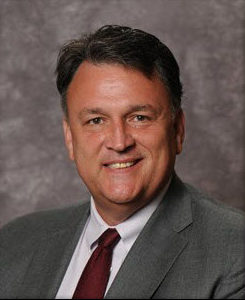
By: Michael Fann, ARM-P, MBA
Director of Loss Control, Public Entity Partners
Fann has more than 30 years’ experience in providing risk management consulting and training for local governments, school systems, universities, state governments, and associations. He is an award-winning author and speaker, working with clients and audiences from Maine to California, from Florida to Washington. Fann is a graduate of Middle Tennessee State University (Finance & Political Science) and Ole Miss (MBA - Management). He has participated in international public risk management exchanges with colleagues from the United Kingdom, China and Australia. A former 2-time member of the Board of Directors of the Public Risk Management Association (PRIMA), he also has served on the Board of Directors of the Public Entity Risk Institute (PERI), based in Alexandria, Virginia.
In 2014, he was presented with the PRIMA’s highest honor as the 11th recipient of its Distinguished Service Award. Further, in 2019, the University of Tennessee’s Master of Public Policy & Administration (MPPA) program conferred its “Fellow in Professional Practice” upon him. He has also received the Southeast Loss Control (SELC) Group’s Distinguished Service Award (2016), TnPRIMA’s Abbie Hudgens Distinguished Service Award (2012), the National League of Cities’ John G. Stutz Award (2010), Public Risk Magazine’s Author of the Year Award (2011), and the University of Tennessee Institute for Public Service’s Project of the Year Award (2004). Fann has also been known to grace the stage with a Blues Brothers routine, entertain with bad karaoke, and once sang an Elvis song at the insistence of Chinese officials.
Toxic employees are trying to “take over” and create toxic workplaces. As a diversity trainer, sexual harassment prevention trainer, consultant, executive coach and expert witness, for 25 years now, so much of my work points to one emerging phenomenon – toxic employees and toxic workplaces are on the rise!
Toxic employees are taking up way too much of our time, distracting us from our mission, our work and quite frankly, not allowing us to focus on the good work we do and the grooming of our high performing talented professionals. Ask any manager, any human resource professional - what keeps you up at night? They will tell you it is the people that “work, game or try to undermine the system.” No wonder this was such a well-received workshop at the IPMA National Conference in Philadelphia recently.
Toxic employees often flirt with violating policies and procedures but work “just a little above the level of being terminated.” Often toxic employees are not stellar performers but when they are – good luck, they feel even more emboldened to suck the light out of the room. Toxic employees are difficult, negative, unhappy, whiners and complainers, but they do not keep their toxic comments and opinions to themselves – they want everyone around them to be just as miserable as them. They want to create a toxic workplace. Why? Because misery loves company! The violence we see in the workplace is a manifestation of this toxicity – the worst example, of course. Now, why are there so many toxic employees and toxic workplaces today? There are several contributing factors.
I think there are too many people in supervision and management that are conflict avoiders – hoping the toxic person and the conflict they create, if ignored, will just go away or that the conflict will subside.
Wrong! The conflict only festers and the toxic person only “gets stronger” because they feel your silence (as a manager or as a human resource professional) is interpreted as tacit support, agreement, or worse yet - complacency. I call this “feeding the monster” and the toxic person only gets more confident.
Managers often do not want to take the time to document and write this toxic person up for insubordination. I say “get out of management, you are not a manager!” Verbal warnings, written warnings, impact on work flow and output – document all of it. The economy is slow to improve and these toxic employees are trapped in their job and cannot leave. How many of these “toxic usual suspects” are a short time away from retiring (RIP – retired in place or ROJ – retired on the job)?
So what do we do? Create an environment of mutual respect and accountability. In other words – define boundaries and when these boundaries are crossed, lay out the consequences. Define the behaviors that are contra-mission and unproductive and put the list up on a public wall somewhere. I call this list my NEVERS LIST – behaviors we (all employees) agree we never want to see again. These behaviors undermine morale, efficacy and kill our mission. Focus on behaviors, separate the person from the behavior and only focus on the set of toxic behaviors that are bringing everyone down.
There is also a list of PREFERS posted – behaviors that all employees agree are preferable and contribute to a positive, highly engaged and productive workplace.
NEVERS - Negative; Devisive; Undermine mission; Disrespectful; Can violate law; Devalue differences; Dishonor core values
PREFERS - Positive; Unify; Support mission; Respectful; Supported by law; Value differences; Honor core values
The final piece to the puzzle is accountability. I tell participants in my workshop every day – “We all have a shared responsibility to ensure ‘our workplace’ is respectful, professional, engaged and high performing.” No such thing as “I am an innocent bystander or not my fight.” Again – we are all in this together.
Whenever you see a NEVER behavior exhibited, say something (everybody steps up):
- “Ouch”
- “Come on now”
- “Really?”…. (my kids employ this technique)
- “We have a set of core values that we all agreed to live by”
- Repeat the comment you just witnessed (sometimes hearing someone else say it out loud helps)
You might be saying – this looks like common sense, do you know how many people do not have common sense? We should always praise and support the PREFERS. We teach more sophisticated techniques but those are presented in our training workshops.
The power here is in the fact that everyone steps up and says something. Bullying would stop, toxicity would be thwarted and we all could get back to work focusing on our work, our mission and things that really matter. Behind all of this work is trust. Do your employees trust their supervisor or manager? Do they trust your leadership? Working with toxic employees and toxic workplaces inevitably gets us involved in “trust work.” How hard do we work for someone we don’t trust? Trust is behind toxic employees and workplaces.
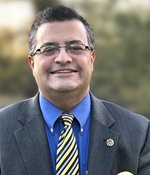
By: Mauricio Velasquez, MBA
President, Diversity Training Group
Mauricio Velazquez has been a diversity and inclusion trainer, coach and strategist (harassment prevention trainer) for over 25 years. He holds a BA from the University of Virginia and an MBA from George Washington University.
Mauricio has trained in every state except for North Dakota and has been to over 70 countries, either for work or life experience. Mauricio and his team work with many local, state and federal organizations.
I’ll bet this has happened to you – it happens to me every time. You buy a new car, and then you start noticing that there are a lot more of these cars around town than you had thought. Is it that all your neighbors are suddenly discovering what you discovered about this brand, that it’s really good?
Actually, it’s a form of what psychologists call Confirmation Bias. Because you’ve bought the car, you’re more aware of it, and your antennas are selectively on the lookout for the brand. Another example of confirmation bias, and one that is very relevant these days, has to do with where you get your news. If you tell me which cable news channel you watch and which thought leaders you follow or which newspapers you read, I’ll bet I can predict your political views. Like attracts like. How do you combat confirmation bias? Get your information from multiple, independent sources.
In his best-selling book, Thinking Fast and Slow, Nobel-prize winning psychologist Dr. Daniel Kahneman outlined a number of ways in which our brains’ wiring creates unconscious biases in how we evaluate information. Risk managers, whose jobs require evaluating evidence and who like to think of themselves as logical, analytical and data-driven, might be surprised at the myriad ways in which they can be fooled if they’re not extra careful. Confirmation bias is one; and there are a couple of others.
Memory is one cognitive function that is very susceptible to being fooled. There is much research on the unreliability of eyewitness testimony (look up Elizabeth Loftus’ Wikipedia page), and the courts are beginning to pay attention. But did you know that imagining that we performed a particular action causes people to misremember that they actually performed it? There is also a frequency effect that impacts memory: If you hear something repeated often, it will come to “feel” true as the repetition renders the statement familiar. This again is an unconscious process that takes place even if you knew the statement to be false initially. Comedian Stephen Colbert’s concept of truthiness (which was named Word of the Year in 2005) follows the same logic: What “feels” true must surely be true! Remember, just because something “feels” true does not obviate the need for more thorough investigations. To counter our fallible memories, double check your “memory” against objective data.
Another interesting unconscious process that can take us down the wrong path is the Substitution Heuristic. When a satisfactory answer to a hard question cannot be found readily, our brains look for an easier question to answer, and answer that one instead. And so, is Competitor A likely to eat into our margins next year, is translated to, How much are they affecting our business this year – a much easier question to answer. Or ask yourself how you would have approached this question this past January: What are the risks associated with a possible pandemic? To counter this one, try to catch yourself doing the substitution, and then laser focus on doing the harder analytical work.
One last one: Anchoring. Anchoring refers to considering a certain value to an unknown quantity before evaluating what the value should be. Retailers are masters at using Anchoring to fool us. Which would be a better value, a pair of shoes with a price tag of $149, or a pair of shoes with a price tag of $199, marked down to $149? Unconsciously, we would opt for the latter. But we would be fooled twice. Second, because we would assume that the mark-down is genuine, but first because we would have anchored the value of the shoes to the suggested price. Maybe they’re only worth $79, but we would have agreed to start the bidding at $149. How do you estimate risk – do you build the model from scratch, or do you start with existing estimates? Note that doctors are not immune to the anchoring error. So often busy doctors will start their evaluation of a new patient with the diagnosis given by the previous treater – which speaks to the usefulness of independent evaluations.
Our brains are magnificent organs, but they’re not fool-proof. Caveat emptor!
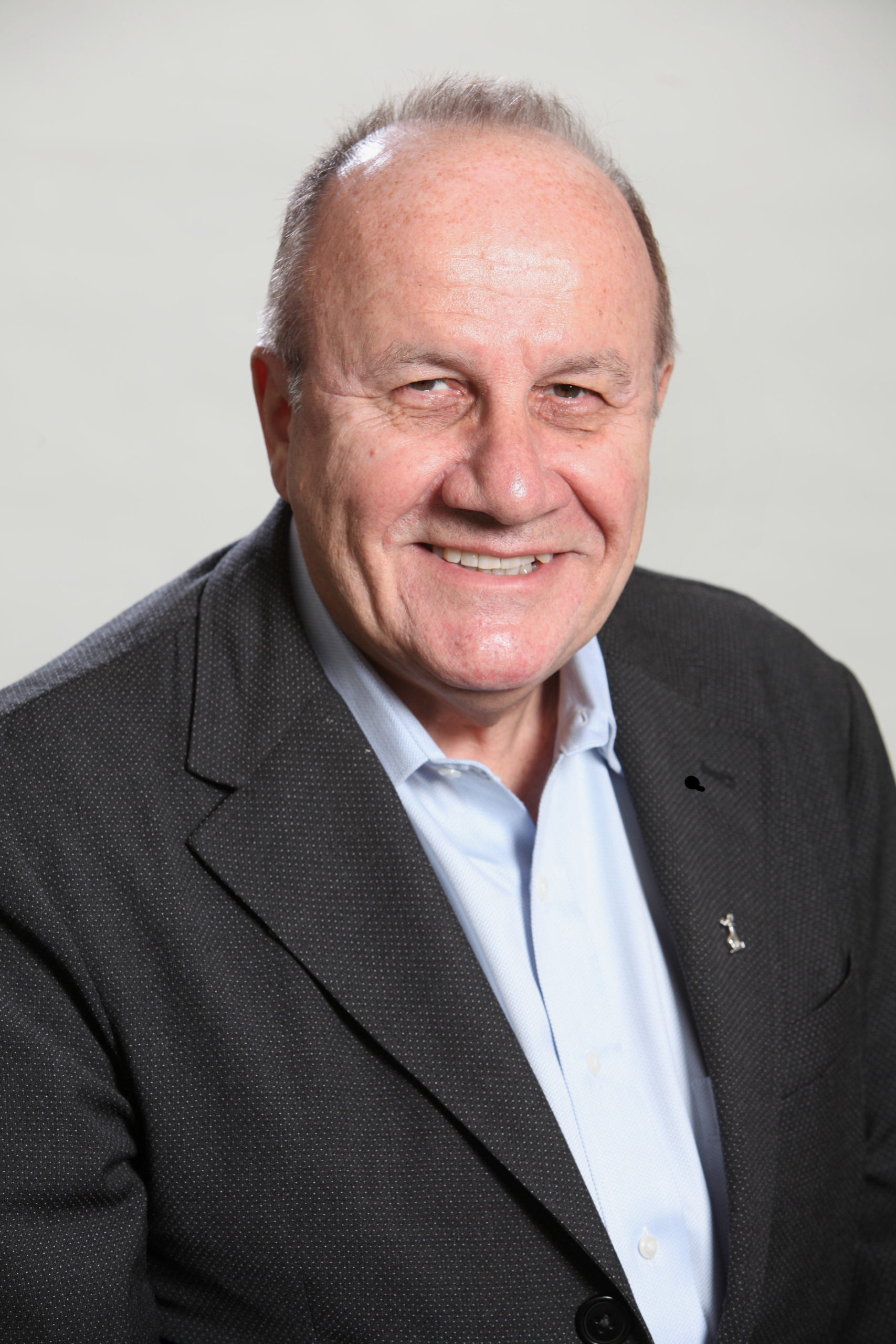
By: Dr. Michael Lacroix, Ph.D.
Medical Director, The Hartford
Dr. Michael Lacroix is Medical Director with The Hartford. He is a licensed psychologist in Florida. He has worked in the overlapping areas of Disability and Workers' Compensation for the last 30 years, in a variety or clinical, management, program development, and consulting roles. Prior to joining the corporate world (Concentra, then Coventry, then Aetna, and now The Hartford) Dr. Lacroix held academic appointments, he developed a large clinical practice focused on assessment, treatment, and rehabilitation of injured and disabled workers, and he also carried out grant-supported research over many years, resulting in over 100 peer-reviewed publications and papers. He is a frequent contributor at industry conferences, including PRIMA. He currently resides in Sarasota, FL.
By all accounts, it appears that the number of medical personnel participating in heavily armed raids is on the rise.
In the mid-1960s, major police departments around the U.S. began employing Special Weapons and Tactics (SWAT) teams: heavily armed, specially trained officers who can act swiftly and decisively in volatile situations. Although the exact figure is unknown, it's safe to say that today a majority of municipalities use SWAT teams.
Growing need for medical personnel due to drug raids
Despite the potential hazards, most SWAT operations end without shots fired. However, SWAT teams have been increasingly used to conduct drug raids, which can present unique risks because drug labs and large caches of hazardous substances pose enormous health threats to responding officers. Of particular concern is fentanyl, which can be fatal on contact or through inhalation.
As a result, SWAT teams have increasingly included medical personnel during drug raids. An in-depth study conducted in 2008 found that 78 percent of SWAT operations had an ambulance on standby, 43 percent of SWAT teams included paramedics and 8 percent had a doctor on location.
What to consider when adding medical personnel to the team
Who employs the doctors? If the doctors are in the city’s employ, the city needs to consider purchasing malpractice insurance. The city also should determine if law enforcement liability coverage includes what an on-scene doctor does or does not do. For instance, if doctors are volunteers and employed by a nearby hospital, will their malpractice insurance apply in the SWAT situation?
Are doctors screened and trained? Medics in quasi-combat environments require the ability to make quick decisions and work without additional medical oversight. How much operational planning includes medical response? How much tactical training are doctors provided?
Are doctors identified on the scene? Doctors in SWAT gear, including those who may be armed, could be targeted by suspects. Doctors should participate in all SWAT training exercises to ensure that all team members are aware of their expected activities during an upcoming operation.
Are policies and procedures updated? Many police departments have lost civil cases because they couldn’t produce relevant policies or failed to operate within those policies. It is important to ensure that policies are updated before deploying doctors or medics.
Can this risk be transferred? If the doctor is not a city employee, the police department must ensure the city is protected under an agreement that outlines all of the necessary requirements to satisfy a municipality’s risk appetite.
Who insures the doctors? Most municipalities do not employ doctors, therefore, they do not have medical malpractice insurance for employees. This raises the need for errors and omissions coverage for doctors accompanying SWAT teams. Any nonmedical action taken by doctors acting as members of a SWAT team could trigger general and law enforcement liability exposures. For example, if an armed doctor uses a weapon and injures or kills someone, claims will most likely follow. The SWAT team then has to defend its decision to employ the doctor and show that the doctor was appropriately trained.
What if doctors get injured? If doctors are employed by the municipality and act within the course and scope of their employment, workers’ compensation coverage would apply. But if the doctors are volunteering their services, that coverage can become fuzzy depending on the jurisdiction. Some states have separate, injured-on-duty programs outside of workers’ compensation for police officers. If doctors are sworn officers or otherwise deputized, this coverage may come into play, which can be significantly more expensive in some instances for the municipality.
What about reputational risk? As police departments continue to be scrutinized with respect to militarization, the use of doctors can have pros and cons and can raise these questions: Does having doctors on the scene increase the expectation that violence and injury will result? Or does the presence of doctors show that the municipality is taking precautions to minimize injury?
What next? Although agencies approach medical services differently, governments should work together toward standardizing guidelines, including having ongoing discussions at the national level to build a consensus on best practices.

By: Robert Marinelli, ARM, CPSI, RSSP
Risk Control Manager, Trident Public Risk Solutions
Responsibilities
Robert oversees risk control operations for insurers specializing in local governments across the United States.
Business Experience
Robert has 28 years of experience in the risk management field, with 18 of those being spent working with public sector insurance (pools and commercial).
Education
Robert earned his MS in criminal justice administration & planning from Northeastern University and his BA in sociology/criminal justice from Western New England University
My personal interest in mindfulness started on August 11, 2017 when my wife was diagnosed with a form of blood cancer in the bones. Stress on the entire family from the 18-month process of preparation for a stem cell transplant, the actual stem cell transplant, the 18-day in-patient hospital stay in an isolation room, and the caregiving that followed was overwhelming. Thankfully, my wife is almost 12 months post-transplant and doing much better.
Fire and EMS experience are part of my background; I thought I was resilient and could compartmentalize the new stressors in my life. However, as each day passed, I felt more agitated, anxious, distracted, angry and sleep-deprived. My mind was wandering, and I was problem-solving work issues at 2:00 a.m. instead of sleeping. I was desperate for help so I turned to mindfulness.
Mindfulness had been described to me as learning how to pay attention in the present moment without judgment. I thought this would help me calm what were, at times, racing thoughts and seemingly insurmountable priorities competing for my attention. I committed to mastering mindfulness in my personal life so that I could apply it to everyday living and what had become my new normal.
As I had success and saw the impact mindfulness made in my own life – and given that I regularly work with police departments – I also developed a professional interest in mindfulness. I genuinely believed mindfulness could be a beneficial tool to these public servants because of the nature of their work and the mental challenges law enforcement can present – enabling them to better cope with the day-to-day challenges of police work before stress builds to an intolerable point.
Working with a subject matter expert on mindfulness along with two police chiefs, we developed a regional workshop series on mindfulness designed specifically for police. The feedback we received from attendees was very positive and surpassed our group’s initial expectations.
A subsequent discussion with an assistant city manager led to the idea that mindfulness could potentially benefit all city employees and not just the police. We expanded and retooled the workshop series for a much broader range of employees. Again, the response to the series was extremely positive and attendees were grateful for the experience. The workshop series was again extended to two regional police executive meetings and had a similar impact.
I encourage you to learn more about mindfulness and how to apply these concepts and tools within your own life. Those who teach mindfulness will tell you that your mind wanders. Your body is doing one thing while your mind is somewhere else. Your mind is ruminating negatively about the past, and then it is worrying about the future. A wandering mind is an unhappy mind.
One mindfulness concept I learned is to focus on your breathing. This will force you to be in the present. Think about it – you cannot breathe in the future and you cannot breathe in the past. You can only breathe in the present.
You can follow several practices, such as box breathing, abdominal breathing and others. There really is truth to the phrase we often hear when angry or frustrated – ‘take a deep breath.’ Diaphragmatic or belly breathing will increase your body’s ability to rest and recover. One recommended resource on mindful breathing is www.mindful.org/belly-breathing.
Now when I do wake up at 2:00 a.m., I use mindfulness to focus on my breathing and get back to sleep. Whatever your current circumstance or walk of life, mindfulness is a valuable tool that warrants your consideration.
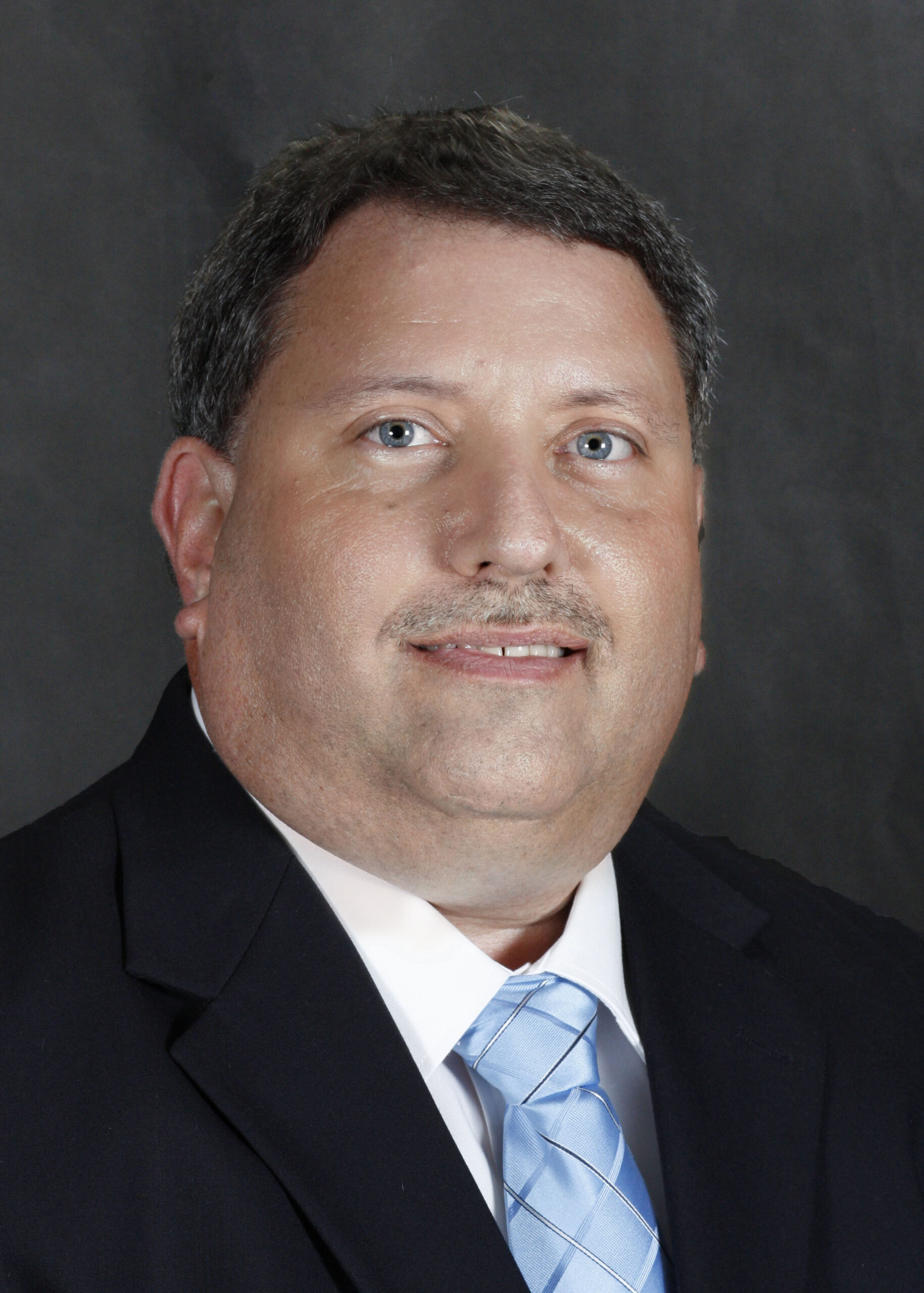
By:Tom Kline
Senior Manager, Risk Control Pooling, Sedgwick
Summary of Qualifications
Tom has built strong collaborative relationships with other subject matter experts in the risk and safety fields. He develops and delivers engaging presentations for workshops, forums and conferences.
Responsibilities
Tom helps clients assess their risks, establish and maintain their safety and risk control programs, comply with local, state and federal standards and implement best practices. He provides safety and risk training on a wide range of subjects.
Business Experience
Tom has over 30 years of safety and risk management experience working with a wide variety of public sector clients, including cities and special districts.
Personal Affiliations
American Society of Safety Professionals (ASSP)
Education
Bachelor of Science Degree in Biochemistry
Associate in Risk Management (ARM)
Water damage to physical property remains the most common type of loss in most parts of the country. There are a few states, like Texas, Oklahoma and Colorado, where hail and wind prevail, but damage by water is far more common for most public entities. It can be caused by, rain, wear and tear to plumbing and other infrastructure or simple negligence. Whatever the cause, the longer the water damage goes untreated, the worse the damage gets and the more expensive the repairs become.
Evidence of water damage may be immediately visible as ponding, staining or even partial collapse of building materials. Typically these issues receive an immediate response, hopefully by a qualified water mitigation company who can immediately assess both the category (how dirty is the water?) and class (how much property is damaged?) of the water damage. These companies should also use non-obtrusive thermal imaging cameras and moisture meters to locate all the areas of water damage so that the drying, or mitigation plan, can take all the excess water into account. Failure to do this will often lead to latent mold claims from untreated damaged property.
Gradual water losses without noticeable water damage, such as small stains that slowly become bigger, are usually treated with a slower response time. However, these issues also require immediate vigilance in order to keep damages to a minimum.
Many properties have on-site building engineers who may be the first responders. They may even have access to air movers and a basic dehumidifier or two. Unless the engineer has specific training in locating and drying properties (training typically provided by the IICRC – the Institute for Inspection, Cleaning and Restoration Certification), the use and placement of the equipment may not be adequate, and, especially in the case of gray or black water, may actually make the problem worse. The key for the building engineers should be to locate the source of the water and remove or remedy it (by their own repairs, by using a plumber or roofer, etc.).
Depending on the age of the structure, other environmental issues may also need to be taken into account – notably asbestos and lead. For properties built before 1980, an asbestos and lead map of the buildings showing where (if any) these materials may be found can significantly expedite the water mitigation. Some jurisdictions will still require a specific test for these materials before any “destructive” mitigation may occur – such as partial drywall, plaster or flooring removal. Most qualified restoration companies have relationships with qualified industrial hygienists who can expedite these tests so that mitigation is not delayed.
Failure to mitigate within 24-48 hours of the loss can, and often does, lead to additional mold damage as well as possible structural damage to the framing and foundation of the property. So, don’t delay and make sure your next water loss is not an unmitigated disaster!
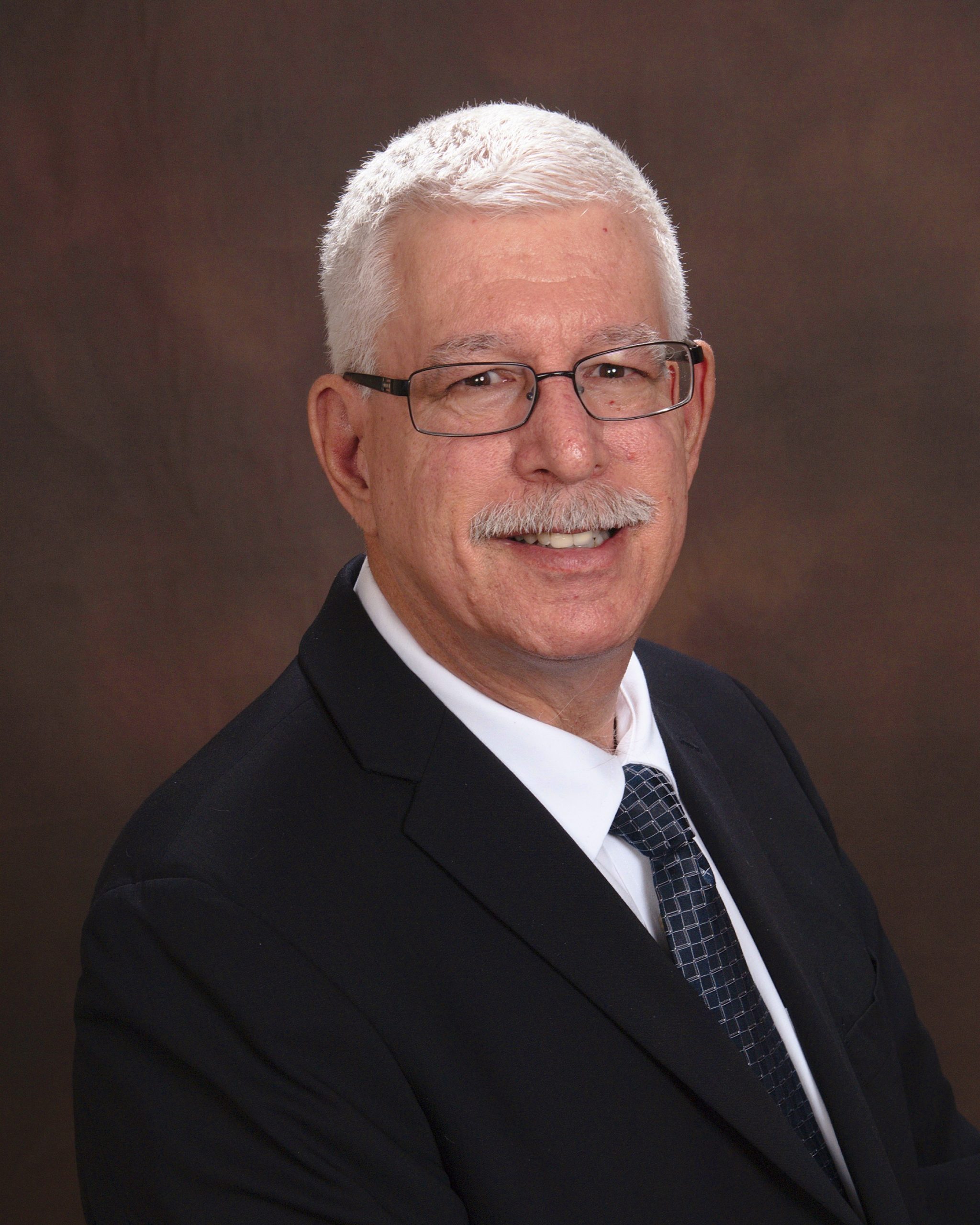
By: Jeff Taxier
Education and Training Manager, American Technologies, Inc.
Summary of Qualifications
Jeff has 35 years of experience in the property insurance field and has been named outstanding presenter by the Property and Liability Resource Bureau in 2016.
Responsibilities
As the education and training manager for American Technologies, Inc. (ATI), Jeff is responsible for creating and delivering training on a variety of topics to the company's internal and external clients, including proper water mitigation, smoke and fire loss handling, environmental hazards, estimating and roof inspections. He has created a number of continuing education courses for insurance adjusters and brokers and has worked with ATI's marketing department to deliver the training. Jeff speaks at a number of regional and national conferences, including RIMS, PLRB, URMIA and IAQA, among many others. He also conducts webinars and classroom training on disaster planning, environmental claim handling, water loss handling, property estimating, etc.
Business Experience
Jeff has 35 years of experience with Allstate Insurance Company, including time spent as the property claim manager for Southern California and as a home office consultant. He has been with ATI for five years.
Professional Affiliations
Jeff is a member of the Society of Claim Law Associates (SCLA) and has IICRC certifications in Water Restoration (WRT), Applied Structural Drying (ASD) and Fire and Smoke Remediation (FSRT).
Education
Jeff received his BA in english from Loyola Marymount University. He is currently a Masters candidate in instructional technology at Northern Illinois University.
Although there have been great technological advancements in transportation, advanced driver-assistance systems (ADAS), computer vision (CV) and other forms of artificial intelligence (AI) – on their own – aren’t perfect. Today we have semi-intelligent systems that can “see” but cannot replicate all human sensory risk inputs, limiting their ability to mitigate road risk. They do not change driving behavior; in fact, most drivers ignore when a semi-intelligent system is wrong, and also tend to ignore when the system is right. If a fleet is solely relying on artificial intelligence, specifically CV, its safety is at risk. Although these systems are part of a well-layered approach to mitigating risk on the road, humans still provide intelligence with the addition of their five senses, historical risk context for optimal road risk mitigation and coaching effectiveness.
Computer vision for transportation risk assessment is used to automate image processing/data capture to identify:
- Pedestrians
- Facial cues
- Traffic signals and signs
- Trucks, cars & scooters
- Other objects
Computer vision is also used in autonomous driving, ADAS (object detection, lane departure and pedestrian detection), parking assist, accident reconstruction/exoneration, claims processing and driver behavior analysis to detect distracted driving, drowsiness, mobile usage, drink/eating while driving and communication with other passenger and passenger activities.1 However, computer vision faces many challenges. As a result, data, alone, can be limited by the circumstances in which it was captured, limiting the effectiveness of CV in risk detection.
Safety programs that facilitate human-to-human coaching that can reduce risk long-term and modify a driver’s behavior are the solution. Humans bring context, five senses and historical risk intelligence that sensors and CV cannot fully replicate at this point. “When we see, our brain is using the context and experience of our entire lives to help, which is one of the reasons we can see so much better than computers.”2 Humans serve to validate the data so that a safety program is effectively using accurate actionable data for coaching and behavior change. For instance, humans can hear and see greater distances and process that a child with a rolling ball may go into the street after the ball and react proactively vs. a sensor that can only pick up within a specific range to react.
A managed service environment as a tool used by humans for coaching and risk management provides a tremendous advantage over computer vision, alone. Human review of the data capture can help eliminate false positives and add needed context for human-to-human coaching to achieve behavior change and risk reduction.
A managed service enables fleets to save time and money by taking the burden off the fleet and providing consistent, unbiased and professional reviewing, scoring and prioritizing of thousands of videos. Only a managed service allows fleets to focus on their business – not on reviewing video.
1 https://appen.com/blog/computer-vision-vs-machine-vision/
2 https://austinstartups.com/human-versus-computer-vision-94183d6737f6

By: Stephanie Forster
Director of Insurance Programs, SmartDrive Systems, Inc.
Summary of Qualifications
Stephanie is director of insurance programs for SmartDrive Systems in San Diego, CA, a video safety solution that reduces claims frequency and costs. She has been working with insurance telematics for over ten years and has spent over fifteen years of professional work experience in translating complex data analytics and technology into tangible, user-friendly products and solutions. Stephanie speaks nationally and internationally regarding insurance telematics.
Responsibilities
Stephanie indentifies and executes insurance program opportunities and maximizes fleet participation in SmartDrive-affiliated insurance programs. She also captures and communicates risk reduction for fleets participating in insurance programs
Business Experience
Prior to joining SmartDrive, Stephanie joined Telogis, Inc., an innovation leader in connected location intelligence located in Aliso Viejo, CA, in 2011 and expanded their commercial insurance telematics program. From 2009 until 2011, she worked with LexisNexis to develop and implement the company's insurance telematics strategy. Stephanie previously worked as a senior account executive for IVOX and as a senior national sales manager for NAVTEQ.
Education
Georgia State University - Bachelor of Interdisciplinary Studies - Intrapreneurial Leadership and Corporate Communications (Summa Cum Laude, President's List)
As more information continues to unfold about the coronavirus (COVID-19) in the United States, it’s important to stay vigilant about it’s current spread, and to prepare in advance to mitigate any potential adverse effects.
Please see “Coronavirus Pandemic Preparedness from a Medical Perspective” for simple yet detailed information on how to prevent the spread of the coronavirus, and for insight on how to prepare (both personally and on an organizational level) for potential coronavirus effects.
This article is intended to build from the previously mentioned article to provide additional recommendations to maintain safety and prevent infection in the workplace.
Organizations must be Vigilant about Disinfecting Commonly Touched Surfaces
Current research indicates that COVID-19 is spread via two main routes. The first method is transmission of the virus through respiratory droplets. This involves breathing in microscopic droplets when an infected person coughs or sneezes. The second route is related to touching your eyes, nose or mouth after encountering an infected surface.
It is unknown how long coronavirus can live on surfaces. Todd Ellerin, MD (contributor for Harvard Medical School Health Blog) stated, “According to the WHO, coronaviruses may survive on surfaces for just a few hours or several days, although many factors will influence this, including surface material and weather.”
Thus, it is critically important for organizations to take a proactive approach to preventing the potential spread through contaminated surfaces.
Strategies to Reduce the Spread of COVID-19 through Surfaces
- Regularly disinfect surfaces that are higher risk for being frequently touched by multiple employees. This may include but is not limited to: doorknobs, keyboards (and the attached computer mouse), faucet handles, water fountains, copiers, fax machines, shared office supplies, telephones or chairs (especially the arm rests). Consult with organizational policy regarding the types of disinfectant utilized. Also, consider any employee allergies to specific products.
- Know the difference between “cleaning” and “disinfecting.” According to the CDC, “cleaning refers to the removal of dirt and impurities, including germs, from surfaces. Cleaning alone does not kill germs. Disinfecting works by using chemicals to kill germs on surfaces. This process does not necessarily clean dirty surfaces or remove germs. Killing germs remaining on a surface after cleaning further reduces any risk of spreading infection (Environmental Cleaning and Disinfection, 2020).”
- Ensure an adequate stock of disinfectant supplies onsite. If there is an unanticipated impact on delivering supplies, do you have an adequate supply onsite to keep your workplace safe?
- Employees may consider keeping a personal supply of hand sanitizer (60% alcohol-based) and disinfectant wipes (or disinfectant spray) in their close vicinity. Of course this is dependent upon job duties, safety, and personal feasibility.
- Individual employees may consider disinfecting surfaces in their own vicinity periodically for infection control. This could include personal surfaces that they frequently touch in their own office or cubicle.
Strategies to Reduce Viral Spread through Staffing Considerations
- Encourage (or mandate if deemed the safest alternative in COVID-19 affected regions) telework options for those positions that are not required to be physically present in the facility. Also consider conference calls (if appropriate) instead of in-person meetings.
- Encourage sick employees to stay home. Recently, the federal government announced that they would be providing relief and assistance to hourly wage workers that need to stay home due to illness. This is intended to assist hourly wage workers that are concerned about maintaining consistent income while under self-quarantine. Stay abreast of the details as they are released to the public.
- Consider having a separate space for employees that become sick at work and are unable to leave immediately. This should ensure that other employees are not at risk of potential contamination.
- Employers and staff may need to consider a plan to address potential effects from schools or childcare agencies that need to close for extended periods of time. This will affect the parents’ ability to work if they are unable to secure alternate childcare arrangements.
- Consider cross-training individuals so multiple roles are covered if needed due to limited onsite staffing.
- Evaluate the risks versus benefits of any business-related travel. First determine if travel is essential or non-essential, especially when entering areas of known COVID-19 exposure.
General Recommendations for Everyone
- Be vigilant not to touch your eyes, nose, or mouth before washing your hands.
After you wash your hands, use a clean paper towel to turn off the water faucet. Remember non-censored water faucets are dirty. Everyone must touch them to initiate water flow to wash their hands. Touching the faucet handle to turn off the water after you’ve washed your hands could expose you to contamination. - Check on elderly family members or friends to ensure they have adequate supplies and medications. If possible, it’s best to gather any supplies or medications that they may need and deliver it to them (to prevent potential exposure from the public). If needed, it’s always possible to disinfect the surfaces of purchased items to ensure they do not have increased risk of exposure.
The CDC recently updated their website to include recommendations to protect yourself in various situations such as: at home, at work, in schools and in the community. These recommendations can be found here (website also listed below).
Final Thought
Prepare but do not panic. It’s much better to be prepared with minimal effects than unprepared and suffering consequences.
Resources
American Society of Safety Professionals. (2020, March 2). The Safety Professional’s Role in Planning for a Pandemic. Retrieved from https://www.assp.org/news-and-articles/2020/03/02/the-safety-professional-s-role-in-planning-for-a-pandemic
Centers for Disease Control. (2020, March 9). Environmental Cleaning and Disinfection Recommendations. https://www.cdc.gov/coronavirus/2019-ncov/community/organizations/cleaning-disinfection.html
Centers for Disease Control. (2020, March 9). Interim Guidance for Business and Employers.
https://www.cdc.gov/coronavirus/2019-ncov/community/organizations/businesses-employers.html
Centers for Disease Control. (2020, March 9). Preventing COVID-19 Spread in Communities. https://www.cdc.gov/coronavirus/2019-ncov/community/index.html?CDC_AA_refVal=https%3A%2F%2Fwww.cdc.gov%2Fcoronavirus%2F2019-ncov%2Fpreparing-individuals-communities.html
Ellerin, T. (2020, February 27). As coronavirus spreads, many questions and some answers. Harvard Health Publishing. https://www.health.harvard.edu/blog/as-coronavirus-spreads-many-questions-and-some-answers-2020022719004#q5

By: Dr. Felice Carlton DNP, RN, FNP-C
Doctor of Nursing Practice; Certified Integrative Health Coach through Duke University
Summary of Qualifications
Felice is a Doctor of Nursing with more than a decade of combined nursing and nurse practitioner experience in improving health outcomes, and decreasing organizational health care costs. Dr. Carlton was a recipient of the prestigious Nurse of the Year Award from the Department of Veterans Affairs; and also served as an award-winning nurse at the National Institutes of Health. She is a highly requested speaker; and is known as an expert medical commentator on ABC, CBS, and the local news.
Responsibilities
Felice served as the sole medical provider for a robust employee wellness clinic for 2.5 years, and independently managed and treated all county employees and their family members. In this role, Dr. Carlton detected and treated disease early before the conditions advanced to costly medical complications and lost productivity. She also mitigated existing medical conditions to decrease overall disease burden physically to the employees and financially to the organization. This role enabled her to focus on full body holistic health, improve patient resilience, promote measurable lifestyle changes, and empower patients to sustain positive health outcomes.
Business Experience
Dr. Carlton serves as the CEO of Felice Carlton Enterprises. Her company's expertise is helping high-achieving women decrease stress, fortify a champion's mindset, lose weight, and attain relaxing rejuvenation. Dr. Carlton also founded A Renewed You: A Mind, Body, and Spirit Retreat™; a safe space for professional women to be peacefully recharged away from the demands of their busy lives. Her results-driven coaching programs, corporate consulting, live events, and trainings equip motivated and driven professionals to sustain high levels of health, vitality, and rejuvenation without compromising their level of success in life.
ERM Experience
These instances relate to specific patient outcomes in wellness, safety, and risk management.
For example, Dr. Carlton treated workers compensation patients, and gave organizational suggestions to improve and prevent future sentinel events. Also, she decreased disease burden and costs by helping patients improve diabetes to where they no longer needed insulin and were safe to operate county motor vehicles (saved over $500/month per patient). Additionally, she completed pre-employment physicals to ensure employees could safely perform the required duties without injury.
Professional Affiliations
American Association of Nurse Practitioners
American Nurses Association
Education
Doctor of Nursing Practice and Family Nurse Practitioner (East Carolina University)
Certified Integrative Health Coach through Duke University
Bachelors of Science in Nursing (University of North Carolina at Chapel Hill)
We live in a global economy, and it was only a matter of time before the coronavirus was going to arrive in the United States despite best efforts.
Recent reports from infectious disease experts highly anticipate the spread of coronavirus (COVID-19) in the community. The actual extent of the spread is unknown, but effects are already being seen in the economy, health care and in shortages of necessary supplies. The Federal Reserve initiated an emergency interest rate reduction (the largest one-time reduction since the economic depression in 2008), to stabilize the economy in the midst of coronavirus virus outbreak concerns.
The Center for Disease Control is expediting COVID-19 testing to identify infected individuals, quarantine them and attempt to determine the origin of their contamination. Increased testing will likely result in increased numbers of confirmed cases.
Given that a vast quantity of products that we use daily are imported from China and other countries it is important to consider ripple effects of supply shortages or unanticipated changes in demand. For example, some international flights to specific destinations have been grounded. Thus, decreasing the need for increased fuel supply which will inevitably affect the oil industry and cause billions in loss for the airline industry. From the health care perspective, the FDA has already announced the first drug shortage of a medication manufactured in China. As an organization or consumer, it’s important to consider what products, supplies, commodities or quality of life factors may be affected, and attempt to plan accordingly.
How the Coronavirus Spreads in Humans
COVID-19 typically spreads through respiratory droplets, such as when an infected person sneezes or coughs, and others breathe in those droplets (you typically need to be within six feet for this type of spread). Additionally, touching an infected surface and then touching your nose, mouth or eyes before washing your hands spreads the virus.
Recommendations to Prevent the Spread
At this time there is no vaccine to prevent the virus and treatment is focused on addressing the symptoms and complications, as there is not a cure for the actual virus. Standard precautions to help prevent the spread of other respiratory conditions such as the flu are also recommended to reduce your risk of contamination or spreading COVID-19. These may include:
- Washing your hands with soap and water for at least 20-30 seconds. If soap and water are not available, use hand sanitizer that is at least 60 percent alcohol based. Soap and water are the gold standard for manually removing and rinsing away germs
- Avoid touching your face, nose or mouth before washing your hands
- Avoid being in close proximity with those who are sick
- Frequently clean and disinfect surfaces that are commonly touched
- Cough or sneeze in a tissue, immediately throw away the tissue and wash your hands
- Stay away from others when you are sick
Pandemic Preparedness from a Medical Perspective
Given that the FDA has announced the first drug shortage as a result of the coronavirus, it is important to consider stocking up now on supplies and medications.
- Request 90-day supplies of your medications. You can request your medical provider to change your current prescription to a 90-day supply to prevent you running out if there is any future shortage. This will give you a stock of 3 months of medications. Please keep in mind that co-pay prices may be affected due to your insurance company. However, some insurances actually prefer patients to obtain 90-day supplies. This does not apply to opioid medications due to safety reasons.
- Ensure you have adequate supplies of over-the-counter medications and supplements. This may include pain and fever relievers (Tylenol/Ibuprofen, etc.), medications for digestive and stomach issues, cough and cold medications, vitamins, etc.
- Make sure you have printed copies of any medical conditions, allergies and current medications in your possession. This is especially important to consider in the elderly population. For example, if an elderly parent is suddenly taken to the emergency room, it is important for the staff to know their exact medication regimen, existing medical conditions and allergies. You can type up multiple copies to keep in your phone, wallet, vehicle or purse.
- Adequate water and nonperishable food supplies. It is completely unknown if there will be any major impacts to food and water supply, but it is always a good idea to be prepared. How would you survive if the grocery stores and restaurants were closed? Having two weeks’ worth of water and nonperishable food for all household members (including pets) is a good start if needed.
- Consider gasoline and fuel needs. If your home uses natural gas to provide heat or operate your stove, this may be a good time to make sure your supply is filled. Additionally, if you live in a place where you can safely store extra gasoline in approved canisters, this may be something to consider.
- Make sure you have adequate medical supplies. For example, if you require oxygen to live or depend on medical devices such as catheters, home dialysis, etc., it is critically important that you have adequate supplies (including tubing) if the delivery company is not able to dispense your equipment.
- Have a plan in place if you have a chronic disease that needs regular monitoring or supplies. For example, if you receive dialysis at a center, infusions, or any type of additional medical care; you may want to contact the medical team to see if there is a plan in place for your continued care.
Who’s Most at Risk for Complications?
Individuals that have weakened immune systems such as babies and the elderly population are most at risk for serious complications. Furthermore, additional high risk populations include those who may be taking medications to suppress their immune system, such as those receiving chemotherapy, those with autoimmune conditions (lupus, rheumatoid arthritis, Crohn’s disease, sarcoidosis, Sjogren’s, etc.), those with diabetes, those with pre-existing lung conditions, heart conditions, and other medical conditions.
Final Words
As you prepare for a potential pandemic, we all desire the best outcomes, but we should be prepared if situations began to cause shortages. Two important questions to consider: What products do I use in my daily life that may be directly or indirectly affected by a potential pandemic (such as those manufactured in China)? What ways can I ensure that I am prepared if we have a shortage of supplies?

By: Dr. Felice Carlton DNP, RN, FNP-C
Doctor of Nursing Practice; Certified Integrative Health Coach through Duke University
Summary of Qualifications
Felice is a Doctor of Nursing with more than a decade of combined nursing and nurse practitioner experience in improving health outcomes, and decreasing organizational health care costs. Dr. Carlton was a recipient of the prestigious Nurse of the Year Award from the Department of Veterans Affairs; and also served as an award-winning nurse at the National Institutes of Health. She is a highly requested speaker; and is known as an expert medical commentator on ABC, CBS, and the local news.
Responsibilities
Felice served as the sole medical provider for a robust employee wellness clinic for 2.5 years, and independently managed and treated all county employees and their family members. In this role, Dr. Carlton detected and treated disease early before the conditions advanced to costly medical complications and lost productivity. She also mitigated existing medical conditions to decrease overall disease burden physically to the employees and financially to the organization. This role enabled her to focus on full body holistic health, improve patient resilience, promote measurable lifestyle changes, and empower patients to sustain positive health outcomes.
Business Experience
Dr. Carlton serves as the CEO of Felice Carlton Enterprises. Her company's expertise is helping high-achieving women decrease stress, fortify a champion's mindset, lose weight, and attain relaxing rejuvenation. Dr. Carlton also founded A Renewed You: A Mind, Body, and Spirit Retreat™; a safe space for professional women to be peacefully recharged away from the demands of their busy lives. Her results-driven coaching programs, corporate consulting, live events, and trainings equip motivated and driven professionals to sustain high levels of health, vitality, and rejuvenation without compromising their level of success in life.
ERM Experience
These instances relate to specific patient outcomes in wellness, safety, and risk management.
For example, Dr. Carlton treated workers compensation patients, and gave organizational suggestions to improve and prevent future sentinel events. Also, she decreased disease burden and costs by helping patients improve diabetes to where they no longer needed insulin and were safe to operate county motor vehicles (saved over $500/month per patient). Additionally, she completed pre-employment physicals to ensure employees could safely perform the required duties without injury.
Professional Affiliations
American Association of Nurse Practitioners
American Nurses Association
Education
Doctor of Nursing Practice and Family Nurse Practitioner (East Carolina University)
Certified Integrative Health Coach through Duke University
Bachelors of Science in Nursing (University of North Carolina at Chapel Hill)
Throughout the United States, there over 3,200 local and county jails housing more than 700,000 inmates. Providing adequate medical care to the inmate population is challenging to say the least, which has led to many states contracting out their jail healthcare to private companies. Unfortunately, many of the leading jail healthcare vendors have been on the receiving end of hundreds of lawsuits, some with multimillion dollar judgements.
Increased exposure to liability and significant medical costs indicate a current healthcare crisis in jails yet public entities remain challenged with controlling costs without jeopardizing the quality of medical services. Taking a proactive approach to establishing strong management and oversight of jail healthcare is necessary to reduce complaints, claims and overall liability to your public entity.
Jail Inmates Have Complicated Healthcare Needs
Caring for the pre-existing conditions of jail inmates is a major contributor to the high cost of jail healthcare. Jail inmates tend to have high rates of chronic illness, substance abuse, and mental health conditions. According to data published by the journal American Family Physician, 26.3 percent of jail inmates are presented with hypertension, 63.3 percent with drug dependence or abuse and 44.3 percent with a history of mental health issues. It’s common for inmates to have multiple pre-existing conditions when they arrive at the jail. It is important to accurately identify, acknowledge and treat these issues. Some courts say that jails need to go so far as to treat the inmate’s conditions regardless of whether the inmate sought prior treatment or not. Once again, your legal council’s advice here is necessary.
Budget Decisions Can Impact Liability and Service Quality
A recent study conducted by The Pew Charitable Trusts provided several insights into the jail healthcare crisis. Decisions made for budgetary reasons can increase exposure to liability and have a tremendous impact on the quality of medical care. One example that can have various negative outcomes is the common practice of not budgeting to staff a jail with healthcare personnel around the clock.
Since jails book new inmates at all hours, some inmates are not screened by trained medical personnel when they arrive. It's easy for correctional staff, who usually do not have medical training, to miss that a new inmate needs medical treatment or has symptoms of a communicable disease. If the inmate or someone the inmate comes in contact with experiences a negative health outcome due to the delayed medical screening, a claim or even a lawsuit could result.
Not having medical care on-site has resulted in unnecessary expenses. When correctional staff cannot reach medical staff for advice about an inmate's condition, their next step is to have the inmate taken to the hospital for an expensive emergency room visit.
Improper Management of Private Providers Can Aggravate the Crisis
Many public entities have a contract with a private company that provides jail healthcare. It's important that public entities involve the entity's legal counsel in the creation of these contracts. Otherwise, the public entity may later find it disagrees with the private provider's interpretation of the company's responsibilities.
It's also critical to ensure RFPs are detailed enough for contractors to create adequate proposals. Although such diligence may seem obvious, the aforementioned Pew Charitable Trusts study found critical omissions in the RFPs related to jail healthcare. A sample of their findings follows:
Many RFPs did not include any utilization data.
70 of the 81 RFPs they reviewed did not request medication-assisted treatment, an evidence-based protocol for treating substance abuse.
Most RFPs didn't include performance requirements.
When contracts have performance requirements, failure to meet them can have serious consequences for the health of inmates as well as legal action against the public entity. Also, it's important to acknowledge contracts with performance requirements that carry financial incentives or penalties are meaningless if the public entity does not assign anyone to monitor the third-party provider's performance.
Public sentiment toward the healthcare system in jails may never change; however, public entities can certainly work to develop stronger partnerships with medical providers helping to support continued care for their inmate population.

By: Kenny Smith
Risk Control Manager, OneBeacon Government Risks
Summary of Qualifications
Certified Safety Professional (CSP)
Responsibilities
Development of risk management resources and training programs for clients.
Business Experience
Kenny has had a focus in local government since 2001 and has 37 years of risk control experience.
Professional Affiliations
Colorado ASSE
Education
BS from West Texas A&M














